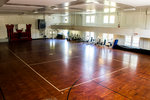
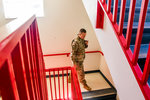
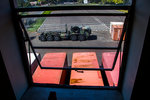
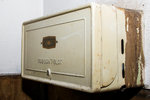
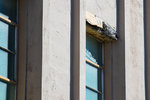
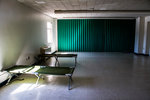
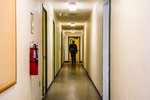
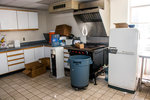
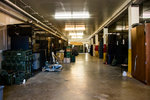
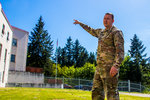
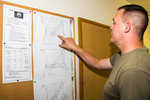
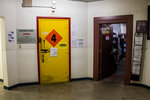
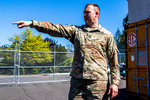
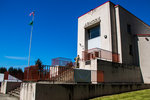
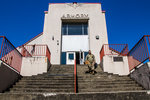
The Washington National Guard will have a presence in Centralia for decades to come, thanks to a multi-million dollar renovation project at the Centralia Armory that’s expected to get underway this summer.
“We’re definitely in for the long haul,” said Tom Skjervold, environmental program manager with the Washington Military Department. “That’s a pretty profound sign. … The National Guard doesn’t let us invest in a place if we don’t have at least a 25-year lease on the property. We’re planning on being there for at least the next two decades.”
In the mid-2000s, the National Guard told the city it planned to close the armory by 2011, which was met by strong resistance from local leaders. According to Skjervold, Centralia was able to demonstrate strong community support for keeping the Guard in town, which led the agency to renew its commitment to the city despite a larger statewide strategy to consolidate facilities.
“It is pretty cool the extent to which Centralia has a real relationship with the Readiness Center,” he said. “That makes it easier, that it is a more successful place for recruiting. It makes it more likely people will serve there, because of that community. … You’re able to find people who want to be in the National Guard and posted in Centralia, because that’s home.”
The facility, built in 1938, is aging and in need of repair. Only a handful of soldiers are stationed at the armory full-time, but many more Guard members call it their home base for weekend drills and training exercise. Emil Pierson, Centralia’s community development director, said the city is thrilled the Guard will be around for the long haul.
“From the city viewpoint, we are excited that they are going to be making improvements,” he said. “We believe we have a wonderful partnership with them. … We love having them here. We want them to continue to be here in the future. We’re very excited to see their future plans.”
The capital budget passed by the state Legislature last month sets aside $2 million for work at the armory, and Skjervold said the department expects to hear back on millions more in federal National Guard funding in the coming months.
“We have recently heard a pledge from the federal side to provide millions of dollars more into that project,” he said. “I’m guessing we’re going to end up with a project somewhere on the order of $6 or $7 million (total). … We are planning on spending at least $5 million in the next couple of years.”
Designs for the project have already been completed, with “alternate bid items” that will get completed depending on how much funding is available. Two of the main components are seismic upgrades and external insulation to improve energy efficiency. Other improvements include lighting, windows, fire suppression, improved office space, electrical and telecommunications services, modernizing the kitchen, adding restrooms and an elevator.
The state will likely announce a contractor sometime around August, with the work expected to take place over a year or two. The exterior work will likely be done first. When complete, the work will have the Guard well-positioned to both serve area soldiers and respond to local needs.
“One of the reasons the Guard likes Centralia is because of flooding issues down there,” Skjervold said. “That has been sort of a response center for us.”
The armory was constructed on the site of the former Grace Seminary, for which Seminary Hill is named. Skjervold said the department is excited to upgrade the “beautiful building” for long-term continued use.
The renovations come after the Guard paid for improvements to its parking lot at the site in 2017. The improved paving helped the city with runoff issues that had resulted from the original gravel lot, and the Guard was able to conduct the project well under budget thanks to a competitive local bidder.
That process also revealed that the armory’s parking lot was on city property, which had been designated for military use in a handshake deal years before. Planners for the Guard and city agreed to a new 25-year lease for the lot.
During the construction process, the department found historical artifacts such as ceramics, writing materials and medical equipment, dating from the site’s previous uses as a school, seminary and hospital. The state worked to collect and preserve those relics, and it paid for interpretive signs at the Seminary Hill Natural Area telling the history of the hill.
Skjervold said collaboration with Centralia on that project has renewed the Guard’s relationship with the city and the neighboring forest land that shares the hill.